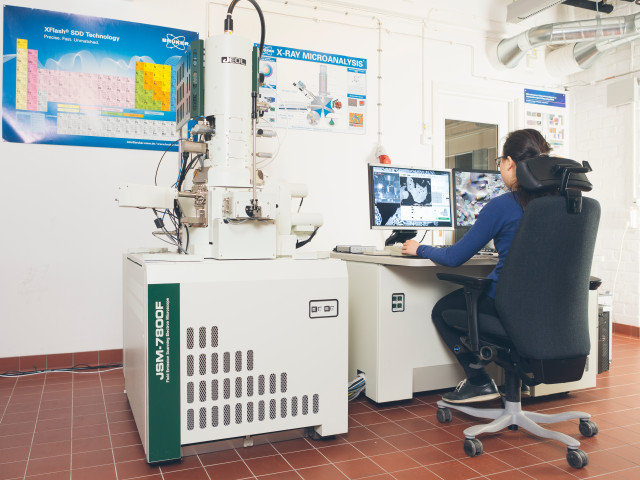Repetition of basic quantum mechanics and solid state physics (operators, Schrödinger equation, expectation values, atomic orbitals, solving the Schrödinger equation in spherical coordinates, variational calculus, Bloch’s theorem, Bravais lattice, reciprocal space, band structure, k-points). DFT model for the helium atom. Solving this model numerically (in Matlab) using finite differences. Calculation and analysis of simpler materials properties using a DFT program package. Assessment of the quality of the calculations. The concepts self-consistency and convergence in DFT calculations. Limitations of DFT calculations.
MH2425 Simulation and Modelling on the Atomic Scale 6.0 credits

Information for research students about course offerings
Contact course responsible
Content and learning outcomes
Course contents
Intended learning outcomes
When you have finished this course, you will be able to perform DFT calculations of certain simpler materials properties (e.g., density, bulk modulus, band gaps). You will also be able to analyze the results of your calculations, and understand the limitations of DFT calculations. In order to do that, you will have to integrate your computer skills (Matlab, Linux) with your knowledge of quantum mechanics, atomic physics, numerical methods and solid state physics.
Literature and preparations
Specific prerequisites
IF1621 Kvantmekanik I, or similar like:
- Quantum mechanics or quantum physics, introductory level.
- Solid state physics or semiconductor physics, introductory level
- Numerical methods, introductory level
Recommended prerequisites
You will need basic knowledge of numerical methods, quantum mechanics, atomic physics, and solid state physics / semiconductor physics. We will use Matlab and Linux. Some knowledge of this software is therefore useful. We will provide tutorial sessions on both Matlab and Linux for those not familiar with this software.
Equipment
We will provide access to all necessary software (Matlab, DFT code, Linux environment)
Literature
- Richard M. Martin “Electronic Structure, Basic Theory and Practical Methods” Cambridge University Press, 2004.
- J.M. Thijssen, “Computational Physics”, Cambridge University Press, 2007
A general text book in solid state physics is also very useful, e.g., Ashcroft and Mermin, “Solid State Physics”.
A general text book in quantum mechanics is also very useful, e.g., P. W. Atkins “Molecular Quantum Mechanics”.
Examination and completion
If the course is discontinued, students may request to be examined during the following two academic years.
Grading scale
Examination
- LABA - Laboratory work, 2.0 credits, grading scale: P, F
- TENA - Examination, 4.0 credits, grading scale: A, B, C, D, E, FX, F
Based on recommendation from KTH’s coordinator for disabilities, the examiner will decide how to adapt an examination for students with documented disability.
The examiner may apply another examination format when re-examining individual students.
Completing all the home assignments and computer exercises. Written exam at the end of the course.
Other requirements for final grade
Grade E: All HA and CE have been completed and handed in on time.
In order to get a higher grade (A-D) you will need to do the written exam.
The grade Fx is given if the requirements for grade E have not been fulfilled.
Opportunity to complete the requirements via supplementary examination
Opportunity to raise an approved grade via renewed examination
Examiner
Ethical approach
- All members of a group are responsible for the group's work.
- In any assessment, every student shall honestly disclose any help received and sources used.
- In an oral assessment, every student shall be able to present and answer questions about the entire assignment and solution.
Further information
Course room in Canvas
Offered by
Main field of study
Education cycle
Add-on studies
Contact
Supplementary information
The course is replaced by MH2426